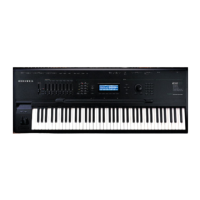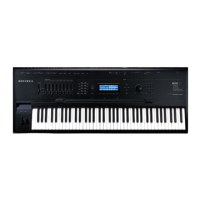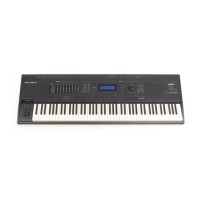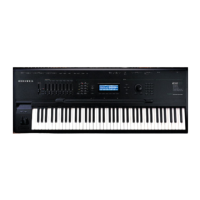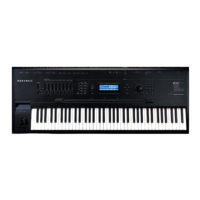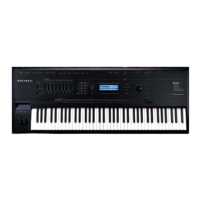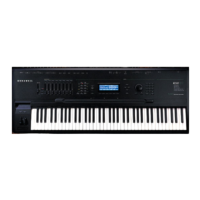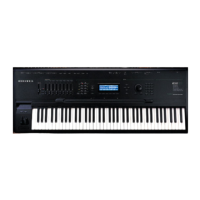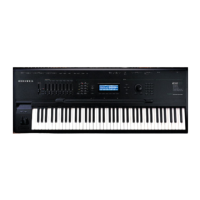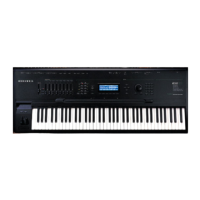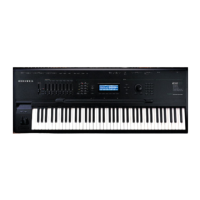Sampling and Sample Editing
The Keymap Editor
15-40
Velocity Crossover (VelCrossover)
This parameter applies only when the keymap assigned to the currently selected program is a
multi-velocity keymap. The name of the keymap usually indicates whether it’s of the multi-
velocity variety (2 Dual Elec Piano, for example). Multi-velocity keymaps have a predetermined
number of velocity levels, each of which can be assigned a different sample.
The K2500 supports keymaps with one, two, or three velocity levels. You can’t add velocity
levels to existing keymaps; if you want to create your own multi-velocity keymaps, select an
existing multi-velocity keymap in the Program Editor before entering the Keymap Editor. Then
you can select the different velocity levels with the CHAN/BANK buttons, and assign samples
to the different levels. The currently selected velocity range is shown in the top line of the
display. Keymaps 2, 10, 54, and 178 are dual-velocity keymaps. Keymaps 164–166 are triple-
velocity keymaps.
When the current keymap is a single-velocity keymap, the VelCrossover parameter does not
appear on the Keymap Editor page. When the current keymap is dual-velocity, the value for the
Crossover parameter will be one of the eight dynamic markings from ppp to fff. The K2500
translates each of your Note Ons into one of these dynamic values, using the settings for the
VelTouch or VelocMap parameters. When this translated value exceeds the setting for the
VelCrossover parameter, the K2500 plays the sample assigned to the upper velocity range.
When the currently selected keymap has three velocity ranges, the VelCrossover parameter
becomes two parameters: LowCrossover and HiCrossover. The K2500 plays the sample
assigned to one of these ranges depending on the translated value of each note’s attack velocity.
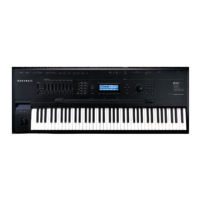
